Did you know that there's an easy way to play jazzy Dorian modal licks? In this lesson we show you how to create Dorian mode solos using common pentatonic scale shapes.
Most guitarists are familiar with pentatonic scales and are confident playing them in one or more fretboard positions. The same scale shapes can also be used to play Dorian modal licks. Read on to find out how...
Dorian Mode Pentatonic Licks
The Dorian modal scale has a distinctive sound that can add interest to a solo. Even if you already use the Dorian mode in your playing, using pentatonic shapes to play Dorian licks will give you a new approach to use in your solos.
Backing Track For Dorian Mode Pentatonic Licks
Once you've mastered the technique, play your own licks over this backing track:
Scale Theory
The theory behind creating Dorian mode pentatonic licks is relatively simple. Basically, the Dorian modal scale contains all of the notes from not one, but two, pentatonic minor scales. We will use the D Dorian modal scale as an example:
D Dorian Modal Scale
The D Dorian modal scale contains the following notes:
D E F G A B C
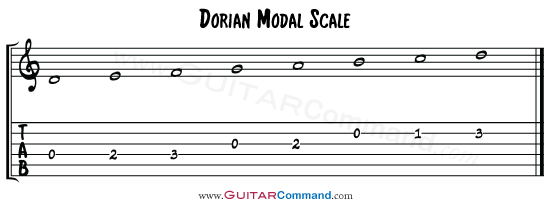
D Pentatonic Minor Scale
The D pentatonic minor scale contains these notes:
D F G A C
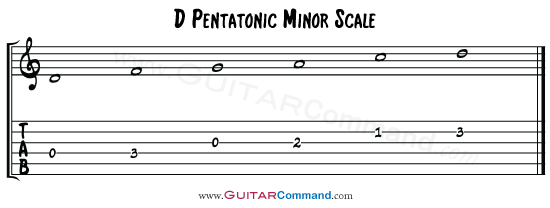
E Pentatonic Minor Scale
The E pentatonic minor scale contains these notes:
E G A B D
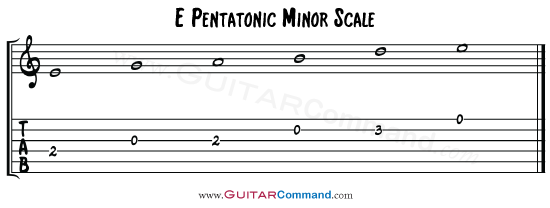
As you can see, the Dorian modal scale contains all of the notes from both the D and the E pentatonic scales. This means that by using a combination of D and E pentatonic minor scales you can construct Dorian licks. Listen to this example solo to hear how it can sound, then play the example licks below.
Confused? Further down the page there is a reminder about how a modal scale is constructed. You can also find out more about modes here: Guitar Modes. Read about pentatonic scales here: Pentatonic Scale Guitar.
Example Solo
To get you in the mood, here is an example solo played using the pentatonic / Dorian trick...
Example Dorian Licks Using Pentatonic Scales
Notice how the following licks are played using just one pentatonic scale shape. This shape is shifted between the 10th and 12th fingerboard positions.
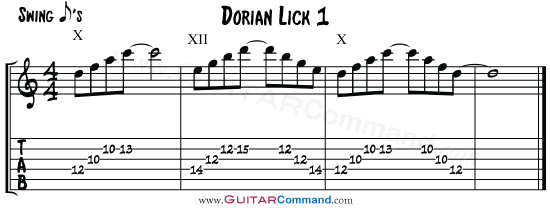
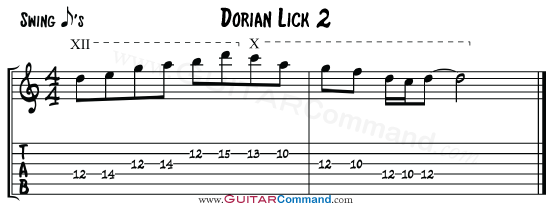
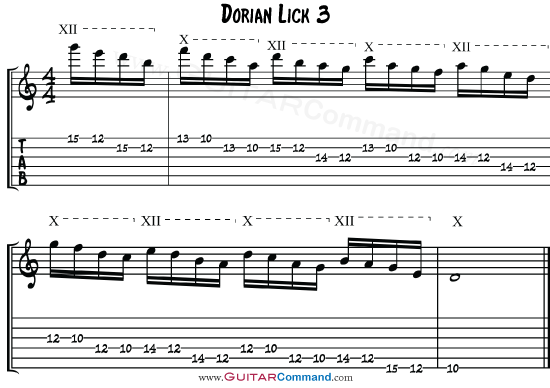
By moving up and down between the D and E pentatonic scales you can create original-sounding Dorian mode licks. The following scales were used to create the example licks:
2 Octave D Pentatonic Minor Scale TAB
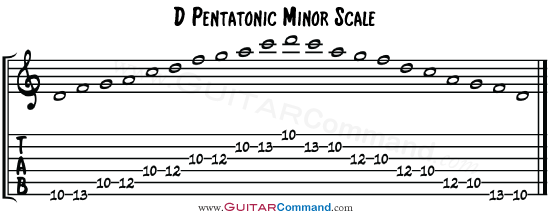
2 Octave D Pentatonic Minor Scale TAB
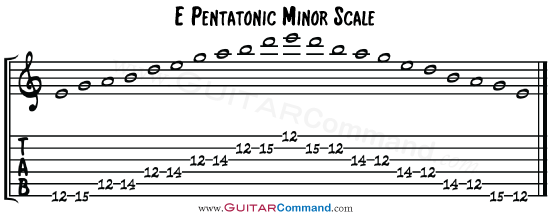
Using pentatonic scales in this way opens up a wide range of possibilities. Most guitarists are very confident playing pentatonic scales. This trick can be used with other pentatonic scale shapes in other fretboard positions.
Using Pentatonic / Dorian Mode Licks In Jazz
These techniques can be used in any kind of music, from folk to rock. However, they are particularly relevant to jazz and fusion music, where modal improvisation is common. Using pentatonic scales in this way can help to make your soloing sound less scalic and more original.
A Note On Dorian Modal Scale Theory
Essentially, a D Dorian modal scale is the same as a C major scale that has been shifted up one note, so that it starts and ends on a D, rather than a C. Likewise, an E Dorian modal scale is the same as a D major scale with the start and end notes shifted up one note, and so on for every major scale.
Notes In C Major Scale:
C D E F G A B C
Notes In D Dorian Scale:
D E F G A B C D
For more information on modal scales see: Guitar Modes
Over To You...
We hope that you enjoy experimenting with this technique. If you have any questions on Dorian mode pentatonic licks then please ask away in the comments below.



Good tips & helpful site.
This has opened my eyes to quite a lot of things. Just one new technique can lead to so much more. I’m playing around with this over all diatonic chords, not just the ii’s. Following the tonal centers, not the chords themselves. Coming up with some great lines … Thank you for an inspiring lesson.
Wes M – good name!
Thank you for your kind comment. Yes, it’s a great way to find new sounds.
I’ve enjoyed trying this out and have come up with some good lines. Thanks. Have subscribed.
Thank you – appreciate your comment.